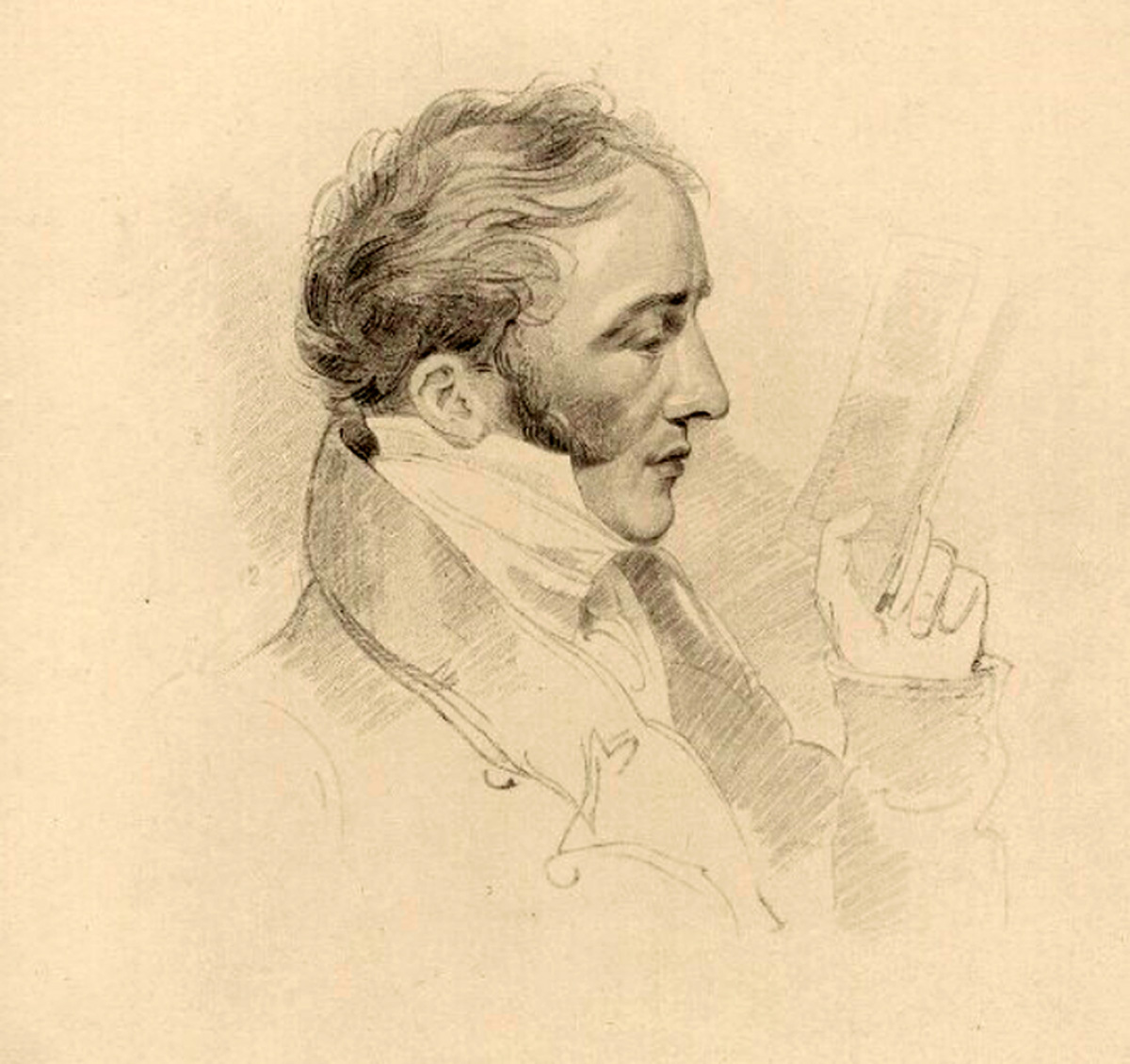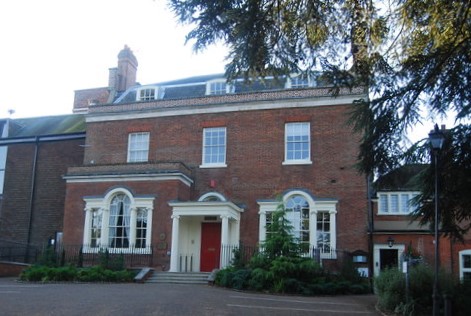Court Garden, Marlow on:
[Wikipedia]
[Google]
[Amazon]
 Court Garden in Marlow, Buckinghamshire, England, is a
Court Garden in Marlow, Buckinghamshire, England, is a
 William Battie (1704-1776) was born in 1704 in Modbury. His father was Reverend Edward Battie who was the Vicar of this town. He was educated at Eton College and then went to University of Cambridge where he won a Craven Scholarship.A new and general biographical dictionary 1812 p. 160
William Battie (1704-1776) was born in 1704 in Modbury. His father was Reverend Edward Battie who was the Vicar of this town. He was educated at Eton College and then went to University of Cambridge where he won a Craven Scholarship.A new and general biographical dictionary 1812 p. 160
Online reference
/ref> He began practicing as a physician in 1729 in Cambridge and then later in Uxbridge and finally in London where he had a very successful practice. In 1740 he inherited a large fortune from his relative Edward Colman of Brent Eleigh Hall in
Online reference
/ref> The couple had three daughters. He became a fellow of the College of Physicians in 1738; censor in 1743, 1747, and 1749; Harveian orator in 1746; and president in 1764. He was Lumleian orator from 1749 to 1754. He wrote numerous books on medical matters particularly mental illness and worked for many years at St Lukes Hospital in London. He died in 1776 and was buried at Kingston upon Thames near his wife. After his death his daughter Anne sold Court Garden to Richard Davenport.Sanxay, Theodore 1907 “The Sanxay family” p. 81
Online reference
/ref>
 Richard Davenport (1729-1799) who bought Court Garden in 1776 was a surgeon of Essex Street in London. He was the younger son of Davies Davenport (1696-1740) who owned Capesthorne Hall. In 1769 he married Fanny Maria Sanxay who was the daughter of Edmund Sanxay, a wealthy landowner from Cheam. Sanxay had only two daughters so when he died in 1787 Fanny Maria and her sister inherited his properties. She died in 1796 and Richard died in 1799. As they had no children Court Garden was left to his nephew Davies Davenport.
Richard Davenport (1729-1799) who bought Court Garden in 1776 was a surgeon of Essex Street in London. He was the younger son of Davies Davenport (1696-1740) who owned Capesthorne Hall. In 1769 he married Fanny Maria Sanxay who was the daughter of Edmund Sanxay, a wealthy landowner from Cheam. Sanxay had only two daughters so when he died in 1787 Fanny Maria and her sister inherited his properties. She died in 1796 and Richard died in 1799. As they had no children Court Garden was left to his nephew Davies Davenport.
 Davies Davenport (1757-1837) did not live in Court Garden because his main residence was his ancestral home of Capesthorne Hall. He rented it to various tenants one of whom was General Alexander Hope who in 1810 was appointed Governor of the Military College when it was in Marlow before it was moved to Sandhurst. The next resident was Sir
Davies Davenport (1757-1837) did not live in Court Garden because his main residence was his ancestral home of Capesthorne Hall. He rented it to various tenants one of whom was General Alexander Hope who in 1810 was appointed Governor of the Military College when it was in Marlow before it was moved to Sandhurst. The next resident was Sir
 The house and its immediate grounds were purchased by public subscription in 1926, with the grounds becoming a public park called Higginson Park, dedicated to General Sir
The house and its immediate grounds were purchased by public subscription in 1926, with the grounds becoming a public park called Higginson Park, dedicated to General Sir
Court Garden, Marlow website
{{coord, 51.56765, -0.77707, format=dms, type:landmark_region:GB, display=title Country houses in Buckinghamshire Marlow, Buckinghamshire City and town halls in Buckinghamshire
 Court Garden in Marlow, Buckinghamshire, England, is a
Court Garden in Marlow, Buckinghamshire, England, is a Grade II* listed
In the United Kingdom, a listed building or listed structure is one that has been placed on one of the four statutory lists maintained by Historic England in England, Historic Environment Scotland in Scotland, in Wales, and the Northern Irel ...
building on the National Heritage List for England. It was built as a house in about 1758 by Dr William Battie, an eminent physician. It was sold in 1776 to Richard Davenport and remained in the Davenport family until 1894. It was then sold and became the home of the Griffin family for the next thirty years. The house and gardens were bought by public subscription in 1926, with the grounds being made a public park called Higginson Park. Since 1934 the house itself has served as council offices and as a venue for special events.
Dr William Battie
 William Battie (1704-1776) was born in 1704 in Modbury. His father was Reverend Edward Battie who was the Vicar of this town. He was educated at Eton College and then went to University of Cambridge where he won a Craven Scholarship.A new and general biographical dictionary 1812 p. 160
William Battie (1704-1776) was born in 1704 in Modbury. His father was Reverend Edward Battie who was the Vicar of this town. He was educated at Eton College and then went to University of Cambridge where he won a Craven Scholarship.A new and general biographical dictionary 1812 p. 160Online reference
/ref> He began practicing as a physician in 1729 in Cambridge and then later in Uxbridge and finally in London where he had a very successful practice. In 1740 he inherited a large fortune from his relative Edward Colman of Brent Eleigh Hall in
Suffolk
Suffolk () is a ceremonial county of England in East Anglia. It borders Norfolk to the north, Cambridgeshire to the west and Essex to the south; the North Sea lies to the east. The county town is Ipswich; other important towns include Lowes ...
who had died a bachelor. In the previous year he had married Ann Goode who he had known since his childhood. She was the daughter of Barnham Goode a teacher at Eton when he had attended this school. They were married in Oxford and went to live in a house in Twickenham which he built for himself and his family in 1740.The Twickenham Museum websiteOnline reference
/ref> The couple had three daughters. He became a fellow of the College of Physicians in 1738; censor in 1743, 1747, and 1749; Harveian orator in 1746; and president in 1764. He was Lumleian orator from 1749 to 1754. He wrote numerous books on medical matters particularly mental illness and worked for many years at St Lukes Hospital in London. He died in 1776 and was buried at Kingston upon Thames near his wife. After his death his daughter Anne sold Court Garden to Richard Davenport.Sanxay, Theodore 1907 “The Sanxay family” p. 81
Online reference
/ref>
The Davenport family
 Richard Davenport (1729-1799) who bought Court Garden in 1776 was a surgeon of Essex Street in London. He was the younger son of Davies Davenport (1696-1740) who owned Capesthorne Hall. In 1769 he married Fanny Maria Sanxay who was the daughter of Edmund Sanxay, a wealthy landowner from Cheam. Sanxay had only two daughters so when he died in 1787 Fanny Maria and her sister inherited his properties. She died in 1796 and Richard died in 1799. As they had no children Court Garden was left to his nephew Davies Davenport.
Richard Davenport (1729-1799) who bought Court Garden in 1776 was a surgeon of Essex Street in London. He was the younger son of Davies Davenport (1696-1740) who owned Capesthorne Hall. In 1769 he married Fanny Maria Sanxay who was the daughter of Edmund Sanxay, a wealthy landowner from Cheam. Sanxay had only two daughters so when he died in 1787 Fanny Maria and her sister inherited his properties. She died in 1796 and Richard died in 1799. As they had no children Court Garden was left to his nephew Davies Davenport.
 Davies Davenport (1757-1837) did not live in Court Garden because his main residence was his ancestral home of Capesthorne Hall. He rented it to various tenants one of whom was General Alexander Hope who in 1810 was appointed Governor of the Military College when it was in Marlow before it was moved to Sandhurst. The next resident was Sir
Davies Davenport (1757-1837) did not live in Court Garden because his main residence was his ancestral home of Capesthorne Hall. He rented it to various tenants one of whom was General Alexander Hope who in 1810 was appointed Governor of the Military College when it was in Marlow before it was moved to Sandhurst. The next resident was Sir Alan Hyde Gardner, 2nd Baron Gardner
Alan Hyde Gardner, 2nd Baron Gardner KCB (5 February 1770 – 22 December 1815), was a British admiral.
Naval career
Born the son of Admiral Alan Gardner, 1st Baron Gardner, he followed his father into the Royal Navy. In 1796 he was captain of ...
who was there until his death in 1815.
Davies Davenport died in 1837 and his son Edward Davies Davenport (1778-1847) inherited the house. He was a prominent Member of Parliament. Like his father he lived at Capesthorne Hall and rented Court Garden to tenants. He died in 1847 and his son Arthur Henry Davenport inherited the property. Arthur died in 1867 and as he was a bachelor and had no children his cousin William Bromley-Davenport (1821–1884)
William Bromley-Davenport (20 August 1821 – 15 June 1884), also known as Davenport and Davenport-Bromley, was an English Conservative politician who sat in the House of Commons from 1864 to 1884.
Biography
Bromley-Davenport was the son of Rev ...
inherited the house. When he died in 1884 his son Sir William Bromley Davenport (1862-1949) became the owner.South Bucks Standard - Friday 12 October 1894, p. 5.
During this time Court Garden continued to be a rental property. In about 1882 Anthony Hutton, an African merchant took a 21 year lease on the house. However in 1891 he decided to leave England and the remainder of the lease was taken by Robert Griffin. He later bought the property from Sir William Bromley Davenport who advertised the house for sale in 1894.
Residents after 1900
Robert Griffin (1838-1921) who owned the house by 1900 made significant repairs to the property which had been allowed to deteriorate before its sale. He was born in 1838 in Warwickshire. His father was an attorney and he also became a lawyer. In 1869 he married Caroline Sophia McClean. The couple had three children, two sons and a daughter. From 1900 until 1910 he represented Marlow on the Buckinghamshire County Council. He died in 1921 and the house was advertised for sale in 1926.Public uses after 1926
 The house and its immediate grounds were purchased by public subscription in 1926, with the grounds becoming a public park called Higginson Park, dedicated to General Sir
The house and its immediate grounds were purchased by public subscription in 1926, with the grounds becoming a public park called Higginson Park, dedicated to General Sir George Higginson
General Sir George Wentworth Alexander Higginson, (21 June 1826 – 1 February 1927) was a British Army officer and veteran of the Crimean War who served more than 30 years in the Grenadier Guards.
Early life
Higginson was born in 1826 in Marlow ...
. He was a veteran of the Crimean War and native of Marlow, and he celebrated his 100th birthday in June 1926.
From 1934 onwards the building was used by Marlow Urban District Council as its offices. Following local government reorganisation in 1974 the building has served as the offices of Marlow Town Council. The Court Garden Leisure Centre and Marlow Museum were built as extensions to the north-east of the house.
References
External links
Court Garden, Marlow website
{{coord, 51.56765, -0.77707, format=dms, type:landmark_region:GB, display=title Country houses in Buckinghamshire Marlow, Buckinghamshire City and town halls in Buckinghamshire